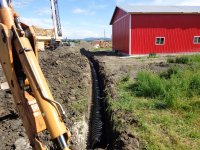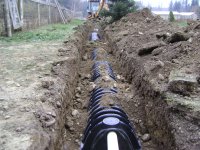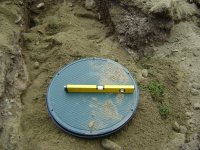Pettrix
Platinum Member
Going to do the septic system on the home. Going with the infiltrator chamber system and a 2,000 GAL concrete (two chamber) tank.
Should I go with a Distribution Box or the installer offered an alternative that doesn't use a D-Box but just feeds directly into the leach fields first line?
I am leaning towards a D-Box since it distributes the waste evenly among all 4 leach field lines, instead of just feeding 1 field and then overflowing into the 2nd field.
The other question is in regards to the backfill over the infiltrator chambers. It can be native soil (which is rocky and silty). I am considering putting down washed 3/4" gravel over the chambers which will help prevent silt from getting into the chambers. I will also put down landscape fabric/geotextile OVER the chamber tops prior to backfilling to also help with preventing silt from getting into the chambers.
Any ideas or comments?
Should I go with a Distribution Box or the installer offered an alternative that doesn't use a D-Box but just feeds directly into the leach fields first line?
I am leaning towards a D-Box since it distributes the waste evenly among all 4 leach field lines, instead of just feeding 1 field and then overflowing into the 2nd field.
The other question is in regards to the backfill over the infiltrator chambers. It can be native soil (which is rocky and silty). I am considering putting down washed 3/4" gravel over the chambers which will help prevent silt from getting into the chambers. I will also put down landscape fabric/geotextile OVER the chamber tops prior to backfilling to also help with preventing silt from getting into the chambers.
Any ideas or comments?





